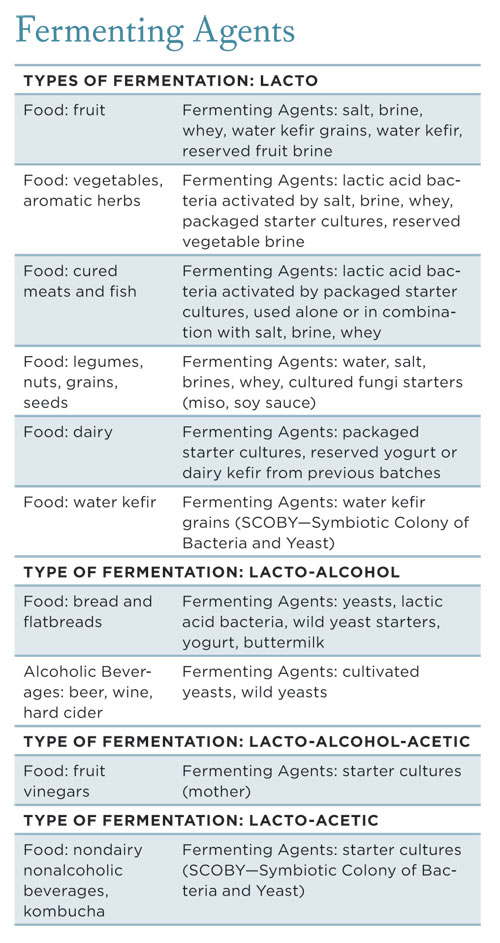Fermentation Process
Beneficial microorganisms are at work in the two main types of fermentation: natural, spontaneously occurring from bacteria, yeasts, or molds in the environment or on the product being fermented, and starter, in which bacterium, yeast, or mold is introduced into a food to jump start the process. These helpers can come in the form of salt, whey, brine, sugar, packaged starter cultures, wild yeast starters, and even alcohol. At least one of these needs to be present to allow for safe fermentation to occur.
Here are some examples of the types of fermentation and their applications:

Download Fermentation Chart Click Here
Starter Cultures specific to dairy and cheese making are in chart form on pages 12 & 13 in Artisan Cheese Making at Home, plus there’s a Comprehensive Cultures Chart on this
page on www.artisancheesemakingathome.com
